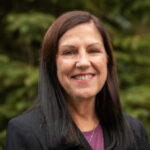The state and U.S. government are partnering together to investigate building a deep port at Nome or Port Clarence. They’re in the early stages of the study. Officials from the Alaska Department of Transportation and U.S. Army Corps of Engineer visited Nome, Brevig Mission and Teller last week to collect public input about marine infrastructure and to hear about local concerns over natural resource impacts.
The Corp took comments for an Environmental Impact Statement on the Arctic Deep Draft Ports Navigation Improvements Feasibility study. The meetings mark the beginning of a long process until proposals for port projects are fleshed out. In Teller, residents asked about impacts to the fragile Arctic environment and the hunting and fishing that so many in the area depend on.
Lifelong resident Josie Garnie says she’s worried about increased vessel traffic and who will regulate and be responsible for cleanup of spills and other pollution.
“It’s just the most beautiful place in the world and it’s really sensitive,” Garnie said. “It’s vulnerable, the environment, if one thing gets impacted it will impact everything else, it’s going to impact the people and we live off the land here.”
Her father Joe Garnie, known for his long career as an Iditarod musher, says he’s worried about vessel impacts to seal pups.
“At this time of the year, literally thousands of seals come in to this bay for calving. They give birth on the ice. They’re here for a few days and then they’re gone. They need that short period when the ice is really thin. If the ice is broken up, I don’t know what that will do to them if there’s a lot of boats in here,” he said.
Teller and Brevig Mission are located near a natural deep water bay and ships have always sought shelter from bad weather or ice at Port Clarence. Garnie says the vessels are coming whether locals want them or not. And he says economic development is needed because there are very few employment opportunities for locals.
“The only thing here is a little grocery store, employees a few, at minimum wage pretty much and the school. The school employs a few and the clinic. That’s it, there’s no real economic base here,” Garnie said.
Lorraine Cordova is an economist with the Army Corps of Engineers and the deep port project manager. She says she learned a lot from the dozens of people who came to the three community meetings.
“Vessels who are selling oil in this region are parking very large vessels here in Port Clarence and then lightering onto smaller vessels. They can avoid taxes and they can also ship lots of oil in very big ships that cannot be accommodated by other ports here. There is a lot of interest in jobs and how this is going to, how a project could benefit the communities and I think we heard that pretty loud and clear from all of the communities that, not only do they want protection of the environment that they live in, but they also want some economic opportunities,” Cordova said.
Deep draft port construction could start in 2017. State and federal government officials say with increased vessel traffic there is a need for ramping up the Coast Guard’s presence for safety and national sovereignty. The Corp will hold more public meetings in December.
Lori Townsend is the chief editor, senior vice president of journalism and senior host for Alaska Public Media. You can send her news tips and program ideas for Talk of Alaska and Alaska Insight at ltownsend@alaskapublic.org or call 907-550-8452. Read more about Lori here.
Diana Haecker is a reporter at The Nome Nugget.





